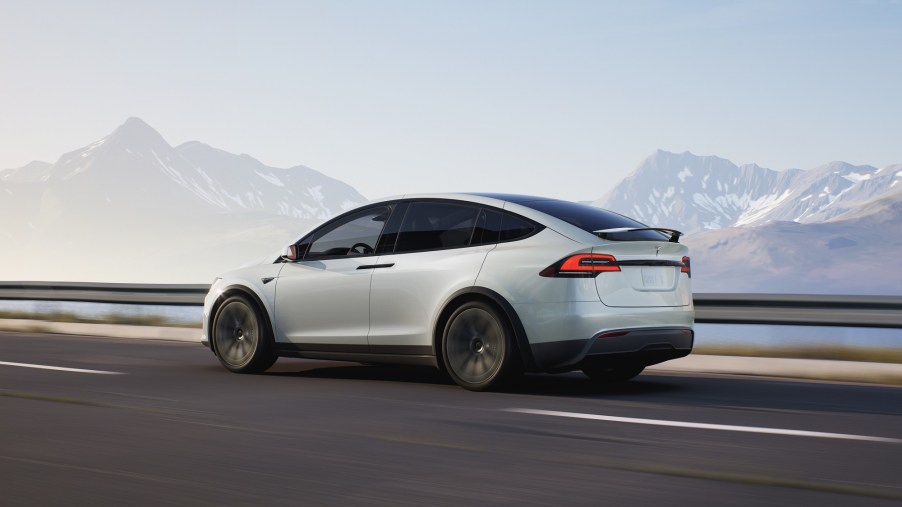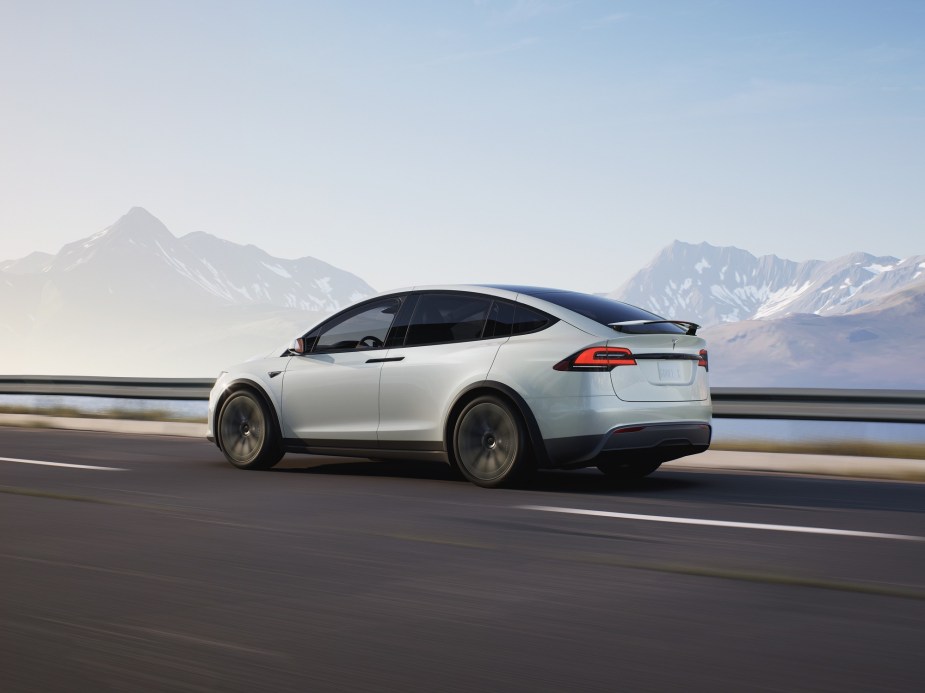
These Electric Cars Have the Best Range in the Winter, According to Recurrent
It’s no secret that electric vehicles (EVs) lose driving range when exposed to temperature extremes. However, not every EV loses range at the same rate. For instance, the Ford Mustang Mach-E loses a different overall percentage of its battery capacity in cold weather compared to Tesla models. Here are some of the electric cars that promise to go the furthest in the cold, according to Recurrent.
Are electric cars good in the winter?
Electric cars with dual or tri-motor all-wheel drive (AWD) offer good grip for winter driving in inclement weather like snow or ice. Moreover, unlike conventional vehicles, electric cars don’t cause tailpipe emissions while they warm up in your spot, driveway, or garage.
However, EVs tend to struggle in wintertime climates as well. For instance, electric cars can have compromised battery capacity in extreme temperatures. That could be a problem for owners in challenging climates who need their EVs to tackle lengthy commutes. Moreover, any accessory use will drain more energy from your EV’s capacity, including the heater, windshield wipers, defroster, and other things you need in poor weather conditions.
Do electric vehicles lose range in the winter?
Electric vehicles lose range in the winter. However, not every EV loses the same amount of battery capacity at the same rate. Recurrent considered some of the most popular EV models across 7,000 vehicles to ascertain how electric cars lose range in freezing temperatures. Here are some popular electric vehicles and their verified winter range loss in temperatures of around 20-30 degrees Fahrenheit.
- Ford Mustang Mach-E: -30%
- Nissan LEAF: -21%
- Tesla Model 3: -17%
- Tesla Model S: -19%
- Tesla Model X and Y: -15%
- Volkswagen ID.4: -30%
It’s evident that, of the verified results from Recurrent’s data, the four Tesla models lost the least of their range percentage-wise. However, all the observations indicate that at least 15% of driving range disappears with freezing temperatures. Of course, Recurrent quickly points out that in other studies, conductors might carry out the tests in a laboratory setting or with a limited number of electric cars rather than averaging conditions across thousands of vehicles.

Why do electric cars have less range in winter?
Electric cars have less range in winter due to slower physical and chemical reactions within the batteries when they operate in extreme cold. Also, Recurrent says that electric vehicles have to create their own heat, as none of the operational heat from an internal combustion application can heat the cabin. As a result, EVs have to make do with a more significant load and reduced range in freezing temperatures.
How cold is too cold for electric cars?
Although Recurrent says AAA’s data might be skewed due to a lack of EV diversity, AAA says that the average electric car could lose as much as 41% of its performance in 20 degree-temperatures. However, it’s not just cold; AAA states that battery electric vehicles (BEVs) could lose as much as 17% at 95 degrees Fahrenheit.
Do you drive your electric car in freezing temperatures? Tell us about it in the comments below!



